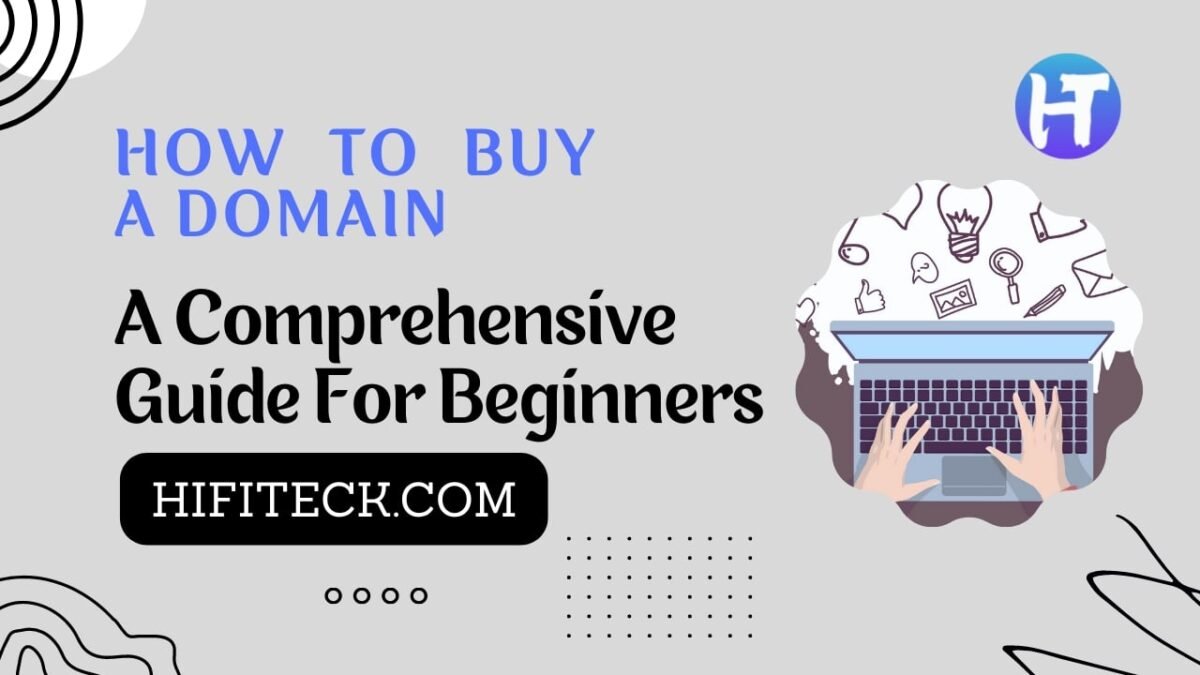Learn how to start blogging and earn money with our comprehensive guide. Discover the steps to create a successful blog, monetize your content, and turn your passion into a profitable online business. Get started today!

Starting a blog can be a great way to share your knowledge and expertise with the world, but it can also be a way to earn money. If you’re looking for how to start blogging and earn money in India, there are several steps you should follow it.
- Choose a Niche
- Choose a Platform
- Choose a Domain Name
- Selecting the Right Hosting Provider
- Install WordPress & Customize the Blog
- Install Essential Plugins
- Create Content
- Promote Your Blog
- Monetize Your Blog
1. Choose a Niche
Choosing a niche is one of the most important decisions you’ll make when starting a blog. A niche is a specific topic or area of interest that your blog will focus on. It’s important to choose a niche that you’re passionate about and knowledgeable in because you’ll be creating content around this topic for a long time. Some popular niches include:
- Health and Wellness
- Fitness and Exercise
- Beauty and Fashion
- Personal Development and Self-Improvement
- Travel and Adventure
- Food and Cooking
- Technology and Gadgets
- Business and Entrepreneurship
- Finance and Investing
- Education and Learning
- Gaming and Entertainment
- Parenting and Family
- Sports and Athletics
- Home and Decor
- DIY and Crafts
Here are some tips to help you choose the right niche for your blog:
- Choose a niche that you’re passionate about: Choose a niche that you’re passionate about because you’ll be writing about this topic for a long time. When you’re passionate about something, it’s easier to create engaging content that resonates with your audience.
- Choose a niche with a significant audience: Choose a niche that has a significant audience because this will make it easier to grow your blog and attract visitors. You can use keyword research tools to see how popular a niche is and how many people are searching for information about this topic.
- Choose a niche with potential for growth: Choose a niche that has the potential for growth because this will give you more opportunities to expand your blog in the future. Look for niches that are trending or emerging, or that have gaps that you can fill.
- Choose a niche that you’re knowledgeable in: Choose a niche that you’re knowledgeable in because this will make it easier to create high-quality content that’s valuable to your audience. When you’re knowledgeable about a topic, you can create content that’s in-depth and informative.
2. Choose a Platform
When it comes to choosing a platform for your blog, two of the most popular options are WordPress and Blogger. Both platforms have their own advantages and disadvantages, and the right choice for you will depend on your specific needs and preferences.
WordPress is a powerful and flexible content management system that allows you to create a professional-looking blog with a wide range of customization options. WordPress is a self-hosted platform, which means you will need to purchase your own domain name and web hosting service to use it. This provides you with complete control over your website, allowing you to customize it in any way you like. Additionally, WordPress offers a huge variety of plugins and themes that allow you to add functionality and customize the design of your blog.
On the other hand, Blogger is a free platform that is owned by Google. It is a hosted platform, which means that your blog will be hosted on Google’s servers. This makes it a great option for beginners who are just starting out and don’t want to invest in web hosting or a domain name. Blogger is also easy to use and comes with a wide range of templates that you can use to customize the look and feel of your blog.
Here are some of the key factors to consider when choosing between WordPress and Blogger:
- Cost: If you’re on a tight budget and don’t want to spend money on web hosting or a domain name, then Blogger may be the best option for you. However, if you’re willing to invest a little bit of money to get more control over your website, then WordPress may be the better choice.
- Customization: If you want complete control over the design and functionality of your blog, then WordPress is the better option. With thousands of themes and plugins available, you can customize your blog to your heart’s content. While Blogger also offers some customization options, they are more limited compared to WordPress.
- Ease of use: If you’re new to blogging and want a platform that is easy to use and doesn’t require much technical knowledge, then Blogger may be the better option. However, if you’re willing to put in some effort to learn how to use WordPress, it can be just as user-friendly as Blogger.
- SEO: Both platforms are SEO-friendly, but WordPress has some built-in SEO features that make it easier to optimize your blog for search engines.
Ultimately, the choice between WordPress and Blogger will depend on your specific needs and preferences. If you’re willing to invest in web hosting and want complete control over your website, then WordPress is the better option. However, if you’re on a tight budget and want a platform that is easy to use, then Blogger may be the better choice.
3. Choose a Domain Name
Once you’ve chosen a platform, it’s time to choose a domain name. Your domain name is the name of your blog and how people will find you online. When choosing a domain name, it’s essential to choose a name that is memorable, easy to spell, and relevant to your niche. You’ll also need to check if the domain name you want is available. Some popular domain registrars include:
- Namecheap
- GoDaddy
- Bluehost
- ETC
4. Selecting the Right Hosting Provider
Selecting the right hosting provider is an important decision when starting a blog. Your hosting provider is the foundation of your blog, and it can affect the speed, security, and overall performance of your site. Here are some factors to consider when selecting a hosting provider for your blog:
- Budget: Your budget is an important consideration when selecting a hosting provider. You can find hosting options that range from free to several hundred dollars per month. However, it’s important to remember that you often get what you pay for. Free hosting may be attractive, but it typically comes with limitations such as lower storage, limited bandwidth, and lack of customer support. Paid hosting plans typically offer more features, better performance, and better customer support.
- Uptime and Reliability: Uptime refers to the amount of time your site is available to visitors. You want your site to be available 24/7, so it’s important to choose a hosting provider that guarantees a high uptime percentage. Look for a provider that guarantees at least 99% uptime. You should also consider the provider’s reliability. Choose a provider with a good track record of delivering on their promises.
- Performance and Speed: The performance and speed of your blog are critical factors that can affect user experience and search engine ranking. A slow-loading site can lead to a high bounce rate and a decrease in traffic. Choose a hosting provider that offers fast loading times and good performance metrics. Some providers offer optimized servers, content delivery networks (CDNs), and caching systems to improve site speed and performance.
- Security: Security is another important factor to consider when selecting a hosting provider. Look for a provider that offers robust security features such as SSL certificates, firewalls, malware scanning, and backup options. Your hosting provider should also offer regular updates and patches to protect against security threats.
- Customer Support: Customer support is an important consideration when selecting a hosting provider. Look for a provider that offers 24/7 customer support through multiple channels such as phone, email, and live chat. You should also consider the provider’s response time and the quality of their support.
- Scalability: Your hosting needs may change as your blog grows. Choose a provider that offers scalable hosting options. This means that you can easily upgrade or downgrade your hosting plan as your needs change.
- User-Friendly Interface: Finally, consider the user-friendliness of the hosting provider’s interface. You want a provider that offers a user-friendly interface and easy-to-use tools. This will make it easier for you to manage your site and perform tasks such as installing WordPress, creating email accounts, and managing your site’s files.
Some popular hosting providers include:
- Hostinger: Hostinger is a popular hosting provider that offers affordable hosting plans and great customer support. It is the best choice for starting blogging.
- Bluehost
- SiteGround
- HostGator
- DreamHost
Note: If you’re using Google’s blogging platform, Blogger, you don’t need to worry about hosting because it’s already provided by Google. Blogger is a free blogging platform that provides free hosting for your blog. When you sign up for a Blogger account, you’ll get a free subdomain (e.g., myblog.blogspot.com), and your blog will be hosted on Google’s servers.
5. Install WordPress & Customizing Your Blog
If you choose WordPress as your platform, connect your domain to your hosting company (only if their company is different) then follow the instructions provided by your hosting provider for installing WordPress to your hosting server.
Customizing your blog is an important step in creating a unique online presence. Here are some tips on how to customize your blog:
- Choose a theme: Select a theme that suits your niche and reflects your style. There are many free and premium themes available for WordPress. You can customize the colors, fonts, and layout of your blog.
- Customize your header: Your header is the first thing your visitors see. Customize your header by adding your logo, tagline, and background image.
- Customize your menu: Your menu is the navigation bar that appears at the top of your blog. Customize your menu by adding or removing pages and categories.
- Create a custom homepage: By default, WordPress displays your latest posts on the homepage. You can create a custom homepage that showcases your best content, featured products, or services.
- Customize your fonts: Choose a font that is easy to read and reflects your style. You can customize the fonts for your blog’s header, body text, and headings.
- Use custom CSS: If you have some coding experience, you can use custom CSS to further customize your blog’s design. You can change the color scheme, font sizes, and layout.
6. Install Essential Plugins
Plugins are small software programs that can be added to your blogging platform (such as WordPress) to extend its functionality and add new features to your blog. There are thousands of plugins available for WordPress, both free and paid, that can help you with everything from improving your site’s SEO to creating custom forms Etc. Install essential plugins such as Yoast SEO, Jetpack, and Akismet.
7. Create Content
Creating quality content is the most important part of running a successful blog. When creating content, choose a topic that you are passionate about and that resonates with your audience. Your content should be informative, and engaging, and add value to your readers. Use a conversational tone to make it easy to read and understand. You can also use images, videos, and infographics to make your content more visually appealing and shareable.
8. Promote Your Blog
Promoting your blog is important to reach a wider audience. Share your content on social media platforms like Twitter, Facebook, Instagram, and LinkedIn. You can also participate in online communities and forums related to your niche to reach new readers. Collaborate with other bloggers in your niche to cross-promote each other’s content. Additionally, you can use search engine optimization (SEO) techniques to improve your blog’s visibility on search engines like Google.
9. Monetize Your Blog
Once you have established a loyal audience, you can monetize your blog. There are various ways to make money from your blog, such as affiliate marketing, sponsored content, advertising, and selling digital products. You can also display ads on your blog using Google AdSense or other ad networks. However, it is important to balance monetization with providing value to your readers and not compromising the integrity of your blog.
FAQs
How do beginner bloggers make money?
There are several ways for new bloggers to earn money through their blogs. Here are some of the most common methods:
- Advertising: One popular way to generate income is by displaying ads on your blog. You can join an advertising network, such as Google AdSense, and earn money when readers click on the ads.
- Affiliate marketing: This involves promoting other people’s products or services on your blog and earning a commission for each sale or lead that you generate.
- Sponsored content: You can write sponsored posts or reviews for brands that pay you to promote their products or services on your blog.
- Digital products: Selling digital products, such as ebooks, courses, or printables, can be a lucrative way to monetize your blog.
- Coaching or consulting: If you have expertise in a particular niche, you can offer coaching or consulting services to your readers.
- Membership sites: Creating a membership site where readers pay a monthly or yearly fee for exclusive content can be a great way to generate recurring income.
How can I start a blog for free?
Starting a blog for free is relatively simple, and there are several platforms available that offer free blogging services. Some of the most popular free blogging platforms are:
- WordPress.com: This platform offers a free blogging service with basic features, and users can choose from various templates and customize their blog before publishing content.
- Blogger: Blogger is another popular blogging platform owned by Google, providing a simple interface and allowing users to customize their blog with different themes and widgets.
- Wix: Wix is a website builder that offers a free blogging platform. It features a drag-and-drop editor and multiple templates and design options.
- Medium: Medium is a popular platform for writers and bloggers. It enables users to publish content for free and offers built-in distribution channels to help reach a wider audience.


